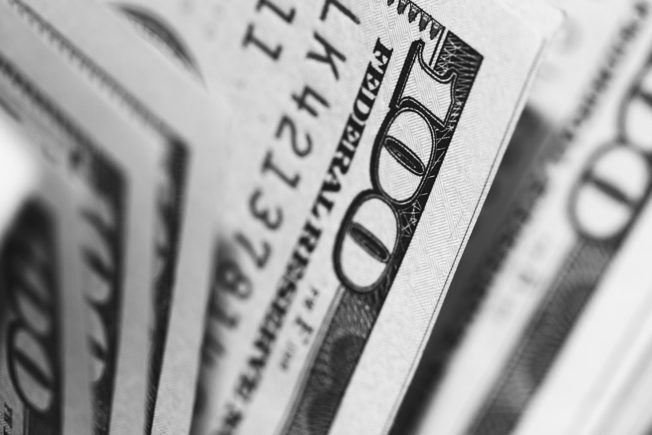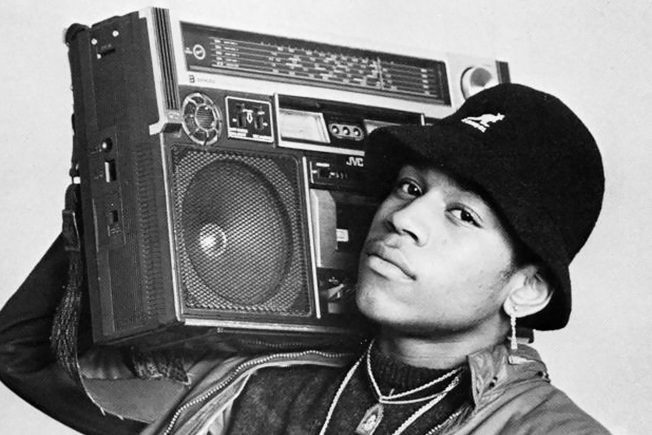Learn how music royalties work and how to get paid. This guide breaks down the complexities of music royalties and music copyrights in the music business.

What Are Music Royalties?
Music royalties are payments that go to recording artists, songwriters, composers, publishers, and other copyright holders for the right to use their intellectual property. U.S. copyright laws give artists these exclusive rights to their work.
Music Royalties are also generated for various types of licensing and usage. The four main royalty types include mechanical , public performance , synchronization , and print music .
The music industry relies on these royalties as a primary form of payment to musicians. Contracts then define royalty agreements between the creator and the distributor.
What Are the Types of Music Royalties?
There are four different types of music royalties. Each type also has separate and distinct copyrights. The four sources of royalty revenue in the music industry are:
1. Mechanical Royalties
Mechanical royalties generate music income for the physical or digital reproduction and distribution of copyrighted works. This applies to all music formats such as vinyl, CD, cassette, digital downloads, and streaming services.
For example, record labels pay mechanical royalties to songwriters every time they press a CD of their music. A copyright owner can also collect mechanical royalties from a digital music distributor service if they are independent.
2. Public Performance Royalties
Public performance royalties generate music income for copyrighted works performed, recorded, played, or streamed in public. This includes terrestrial radio, television, bars, restaurants, clubs, live concerts, music streaming services, and anywhere else your music plays in public.
Performance Rights Organizations (PROs) collect performance royalties. PRO organizations such as ASCAP , BMI , and SESAC negotiate licenses for public performances and monitor their usage. They also collect and distribute the royalties generated to the rights holders.
To collect public performance royalties, you must first register with a Performance Rights Organization. Be aware, the songwriter and publisher of the work split these royalties 50/50. Therefore, you must register as both the writer and publisher to receive 100% of the performance royalties.
3. Synchronization Royalties (Sync)
Synchronization royalties generate income for copyrighted music paired or ‘synced’ with visual media. Sync licenses grant the right to use copyrighted songs in films, television, commercials, video games, online streaming, advertisements, music videos, and any other visual media.
However, a synchronization license does not include the right to use an existing recording with audiovisual media such as a YouTube video. A licensee will need a master use license before using copyrighted music with a new audiovisual project. This is an agreement between the master recording owner, such as a record label, and the person seeking permission to use the recording.
Any use of protected music in an audiovisual project will need a master use license and a sync license. It doesn’t matter if it’s a full song or short sample. For example, you need both a master and sync agreement before syncing up the latest Jauz track with your wakeboarding video on YouTube.
4. Print Music Royalties
Print royalties are the least common form of payment a copyright holder receives. This royalty applies to copyrighted music transcribed to a print piece such as sheet music and then distributed.
Additionally, the copyright holder pays out these fees based on the number of copies made of the printed piece.
How Do Music Royalties Work?
Music royalties and copyrights is a complex subject. This guide outlines the basic rights and usages of musical compositions.
Types of Song Copyrights
Music copyrights have two components: master rights and publishing rights .
- Master rights belong to the owner of a master sound recording. A master recording is an original song or sound used for reproduction and distribution. Master rights typically belong to either the artist(s), record label, recording studio, or any other party who financed the recording.
- Publishing rights belong to the owner of the actual music composition. The publishing side of music refers to the notes, melodies, chords, rhythms, lyrics, and any other piece of original music.
What Are the Exclusive Rights of Copyright?
Copyright law grants six exclusive rights to control the use and distribution of copyrighted work. The copyright owner has exclusive rights to:
- Reproduce and make copies of the original work . For example, a digital music download and physical formats like a CD or vinyl.
- Prepare derivative works based on the original work . For example, a new original product that includes aspects of an existing song. This consists of a cover song, remix, or any altered version of an existing song.
- Distribute copyrighted work to the public . For example, release the song through a music distributor, digital download, or record label.
- Perform copyrighted work publicly . For example, live concerts or live performances in a public setting.
- Play copyrighted work publicly . For example, through music streaming, satellite radio, music videos, FM radio, a TV show, etc.
- Display the copyrighted work publicly . A public display means to show a visual copy of the work to others. For example, sheet music or photos from performance pieces.
The copyright owner can transfer these exclusive rights or parts. The two methods of transfer are licensing and assignment. Transfers must be in writing and signed by the copyright owner or an authorized agent.
Who Gets Music Royalties and Administers Them?
The following roles either receive or distribute royalties for copyrighted music:
1. Songwriters
Songwriters are those who write both the music and lyrics for a song. They receive either mechanical, performance, or sync royalties depending on the usage of their recordings.
If multiple songwriters contributed to a song, they would need a split sheet. A songwriter split sheet is a written agreement that identifies each contributor to a song and establishes ownership percentages amongst them. The agreed percentages determine how much each contributor will receive from the royalties generated by their music.
2. Publishers
The publisher is the person or company responsible for ensuring copyright holders receive payment for using their music. For example, a music publisher will obtain the songwriting copyright in exchange for royalty privileges.
A publishing company will also issue licenses for using music they represent. They also monitor them and collect licensing fees. These publishing royalties get split between the publisher and the songwriter.
3. Record Labels
Record labels market and distribute an artist’s original work. They often have the master rights to a recorded song, but not the publishing rights.
Record labels generate income from mechanical and public performance royalties. They issue contracts that allow them to exploit the recordings in exchange for royalty payments over a set length of time. The artist then receives a flat rate or percentage of these record label royalties.
4. Digital Music Distributor
Digital music distribution services help independent artists and labels get their music on major online music stores and streaming sites worldwide. These digital aggregators distribute music on iTunes, Apple Music, Spotify, Beatport, Amazon, Google Play, Pandora, and other leading music platforms.
A digital music distributor collects mechanical royalties for every music purchase, download, or stream. They also collect public performance royalties generated from the public performance of your song, such as a live performance or radio broadcast.
[yuzo id=”13031″]
5. Performing Artists
A performing artist is anyone who performs the songwriter’s original work. Performing artists do not have publishing rights unless they are also the songwriter.
Public performances of copyrighted music generate performance royalties for songwriters. These fees are often collected by a Performing Rights Organization such as ASCAP, BMI, or SESAC.
6. Performing Rights Organization (PRO)
A Performing Rights Organization collects public performance royalties and distributes them to the songwriter and music publisher. These organizations also monitor performances and broadcasting of registered music played in public.
The PROs in the United States include ASCAP, BMI, and SESAC. You must register with one to collect performance royalties.
7. Mechanical Rights Agency
Mechanical rights agencies manage mechanical licensing rights for the music publisher. They also issue those rights to anyone reproducing and distributing copyrighted musical compositions.
These agencies often charge a set percentage of gross mechanical royalties collected for their services. In the U.S., the Harry Fox Agency is the group that issues mechanical licenses and collects royalties on behalf of the rights holder. A percentage of gross mechanical royalties collected are then paid to the publisher of the song or music composition.
8. Sync Licensing Agency
Sync licensing agencies acquire the rights from record labels and music publishers to issue licenses for syncing music with visual media. They also distribute royalties for sync licenses to whoever owns the master recording rights.
Music users typically work with a music supervisor for sync licensing. A music supervisor oversees all music-related aspects of television, film, advertising, video games, and other existing or emerging visual media platforms. They also serve as middlemen between the artists and the companies or directors licensing the music.
The Breakdown of Copyright and Licensing
Here is a brief breakdown of the copyright and licensing uses covered in this guide:
Every song has two copyrights: Composition rights and master rights . Music composition copyrights include the underlying music and any lyrics. Master copyrights include the reproduction and distribution of the master recording.
There’s a difference between licensing and royalties. A master license grants a music user permission to use intellectual property owned by someone else. Whereas royalties are the payments generated from using that intellectual property.
Artists issue exclusive rights to a publishing company for the use of their recordings in exchange for royalties. The music publisher may then release the recording or issue rights to either a record label or mechanical rights agency.
Additionally, artists can assign the master sound recording copyright to a record label. This agreement allows the label to reproduce, distribute, and license that recording in exchange for royalties.
Lastly, all parties involved in the production receive a percentage of royalty payments. The royalty amounts are often negotiated upfront and then defined in a legally binding agreement.
Conclusion
Various music copyright usages generate royalties. New royalty streams also emerge as the music industry and technology continue to evolve. They protect your music while also providing a revenue stream.
However, learning how to navigate the complexities of royalties can seem overwhelming. I hope this guide gave you a better understanding and the confidence to enter the music business.

Turn your passion for music into a Profession: Learn more about our Music School Programs!
MORE ARTICLES FROM THE ICON BLOG

FIND YOUR SOUND, HONE YOUR CRAFT:
Are you ready to turn music into a career? ICON prepares students to become music producers, composers, performers, recording artists, professional DJs, and entrepreneurs in the entertainment industry. Click below to get information about our award-winning programs:

